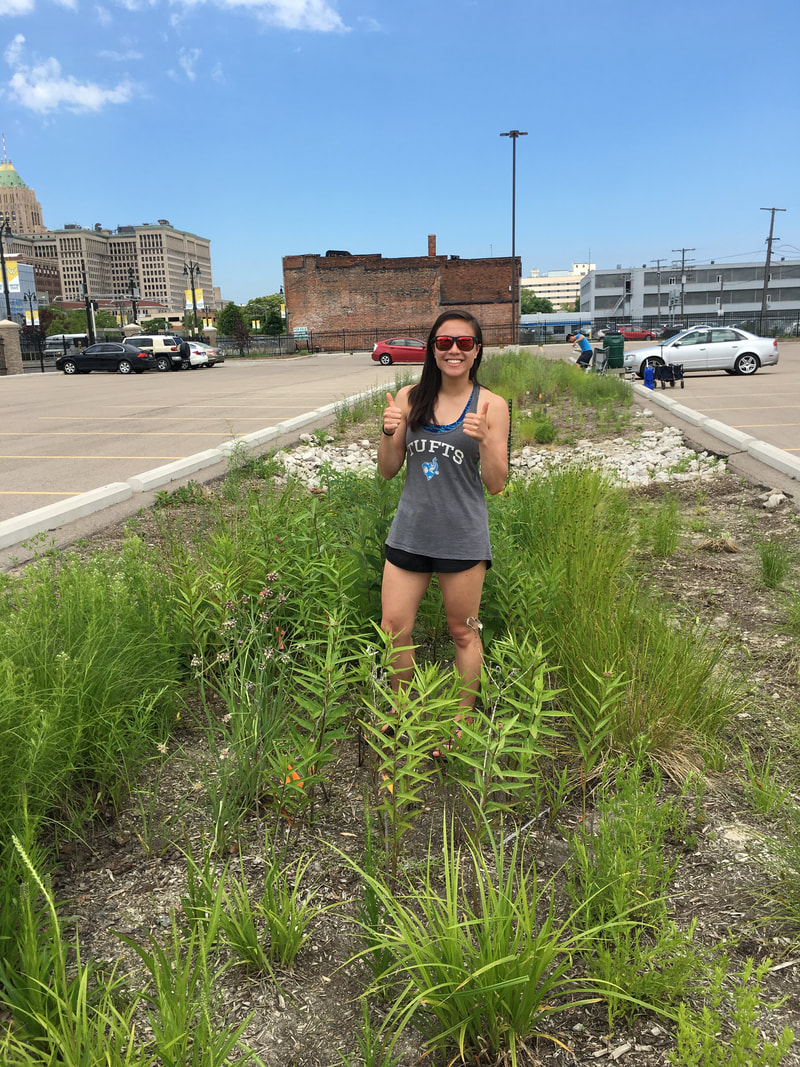To me, ecohydrology means using native plant species to manage water resources and improve environmental health. Water is essential to ecosystems, and ecohydrology aims to reintroduce ecosystem services in heavily built environments to restore natural hydrology and biogeochemical cycling. Ecohydrology is a truly interdisciplinary field that links engineering, environmental science, and computer-based modeling.
What are your undergraduate and graduate degrees in?
I am currently double majoring in environmental engineering and community health at Tufts. I plan to pursue graduate study in civil and environmental engineering with a focus on urban flood management!
How did you arrive at working in/thinking about ecohydrology?
The Urban Water Innovation Network (UWIN) Undergraduate Research Program provided me with an incredible opportunity to work in ecohydrology the summer after my sophomore year. While in Detroit, Michigan, I modeled the storage of stormwater in a retrofitted bioswale and tracked image-derived greenness for use as a potential near-remote sensing tool. Green infrastructure interests me because it is a low-impact approach that simultaneously provides urban flood control and numerous other co-benefits to improve environmental health in a city.
What do you see as an important emerging area of ecohydrology?
As the world becomes more urbanized, urban ecohydrology is an especially important area of ecohydrology. Greenspace is limited in cities, so urban ecohydrology is needed to better understand the urban water cycle and how cities can mimic ecosystems to better manage water resources.
Do you have a favorite ecohydrology paper? Describe/explain.
While working with the Papuga Lab in Detroit last summer, we read this paper (Meerow and Newell 2017) about green infrastructure spatial planning in Detroit. This paper is one of many that informed me about how the history of Detroit makes green infrastructure a favorable revitalization strategy. I really liked how this paper, in particular, focused on the co-benefits of green infrastructure in addition to its stormwater management services. Additionally, I enjoy working with spatial data, so I like that this paper conducted a spatial analysis.
What do you do for fun (apart from ecohydrology)?
I began running in college, and I’m always discovering new routes in the Somerville/Cambridge area. I’m also always eager to travel—I love exploring new places or trying new foods. I especially enjoy niche tours. The Block Island Offshore Wind Farm (Rhode Island) and Deer Island Wastewater Treatment Plant (Boston) are among my favorite tours. And like many LEAFs, I love a good hike!

 RSS Feed
RSS Feed